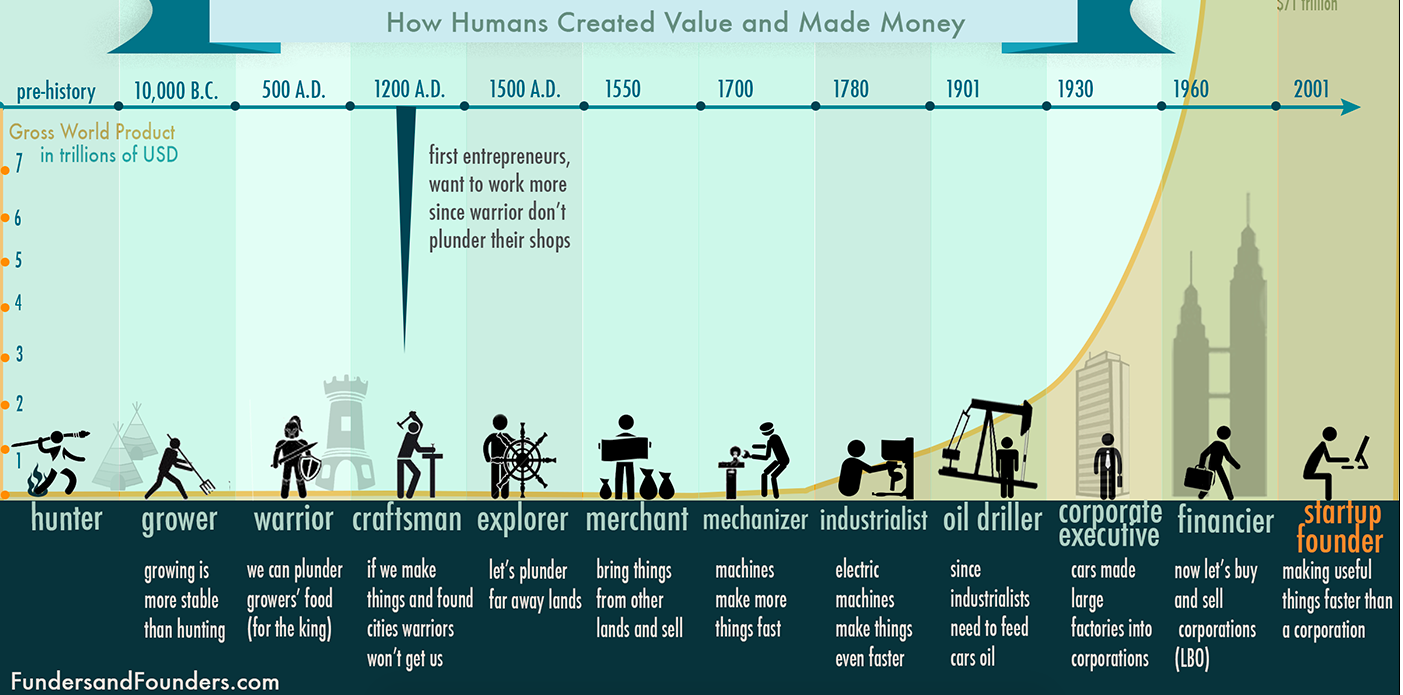Companies buy products or services to increase their bottom line and don't focus on employee or consumer happiness created to drive that purchasing decision. The choices are only increasing making it more difficult to pick from myriad options in the market. So what is the best competitive strategy? Putting people first.
Coming from a 'human-resource-in-plenty' kind of place like India, I understand the value of people and how they can drive both the problems and solutions of an economy. Value creation has simply become secondary to profitability. This is where we need to go back to basics and understand that the goal of a company should be to create and deliver value in an efficient way so it can generate profit after cost.
So profitability is result of creating and delivering value.
Video: Peter Thiel's talk at Stanford
Peter Thiel says that all businesses must create value, but some are more useful than others. All happy companies are different: each one earns a monopoly by solving a unique problem. To solve that unique problem, you must develop unique skills and processes.
In the real world outside of economic theory, every business is successful exactly to the extent that it does something that others cannot."
So what do people really want?
People can be both complex or simple but many studies show that there's only a few things that they really want.
 Image Source: FundersandFounders
Image Source: FundersandFounders
Here's a summary of what people would associate with value creation:
- People aren't interested in what you are selling but in what it can do to solve their problems and improve their lives.
- They are more interested in how their purchasing decision can improve their personal time and decrease the effort they have to put in.
- They want things to happen where they are no matter where that is so location is irrelevant.
- Choices confuse them and they prefer when there are less deciding factors. Simple is better.
Typical journey to make a software-buying decision or brand-affinity decision
If you take a look at how you aid decision-making through your content, website and sales processes there are multiple steps that might mostly confuse instead of simplify. It's paramount to look at value creating vs. wasted time and find a way to help reduce the number of steps and enable decision-making.
Instead of getting easier, it’s getting harder to find consumption easier or more satisfying, largely due to the choices made available. This makes decision-making harder than ever (Sheena Iyer’s Jam Theory)
Consumers are drowning in a sea of brilliant objects.
Move from a process to an experience
We love the flywheel model that our partner HubSpot has shared widely that puts the customer at the center of all processes of an organisation. We love that!
It's amazing what a shift in thinking and focus to the person you are selling to can do in terms of creating value and therefore profitability.
Tags:
Marketing + Automation
January 17, 2019

